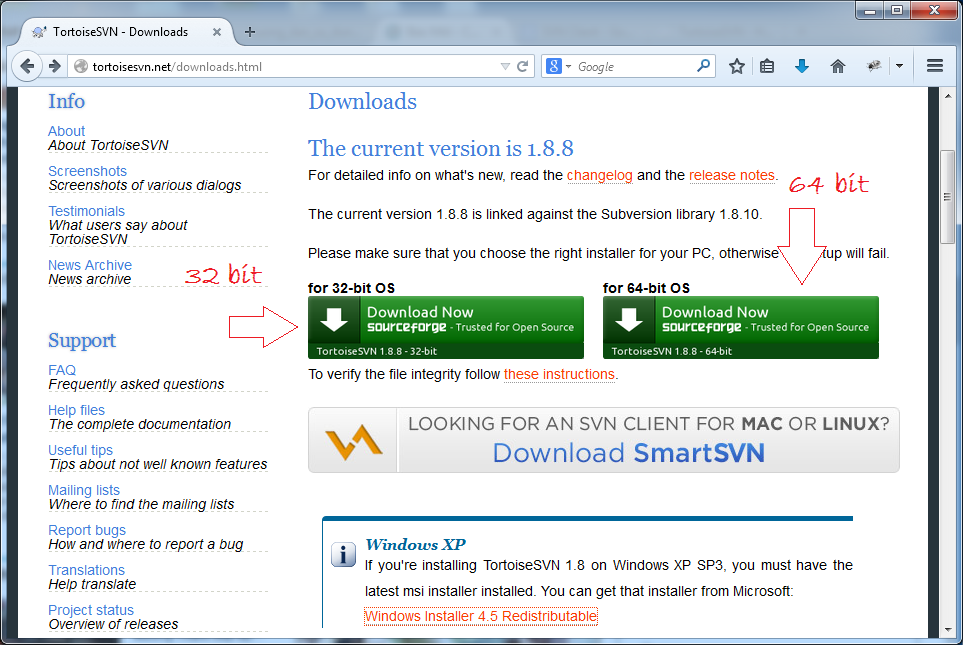
- #Tortoise svn client tutorial install
- #Tortoise svn client tutorial update
- #Tortoise svn client tutorial software
Here's a link to TortoiseSVN's open source repository on GitHub. TortoiseSVN is an open source tool with 39 GitHub stars and 29 GitHub forks. TortoiseGit can be classified as a tool in the "Git Tools" category, while TortoiseSVN is grouped under "Code Collaboration & Version Control". It is based on Apache™ Subversion (SVN)® TortoiseSVN provides a nice and easy user interface for Subversion.Since it's not an integration for a specific IDE like Visual Studio, Eclipse or others, you can use it with whatever development tools you like, and with any type of file.
#Tortoise svn client tutorial software
It is a really easy to use Revision control / version control / source control software for Windows. On the other hand, TortoiseSVN is detailed as " The coolest interface to (Sub)version control". It is free software released under the GNU General Public License. It is a Git revision control client, implemented as a Windows shell extension and based on TortoiseSVN. To double check that everything is committed to the repository go to your URL Ĭlick on "Checkout" and use your repository URL.TortoiseGit vs TortoiseSVN: What are the differences?ĭevelopers describe TortoiseGit as " The Power of Git in a Windows Shell". NOTE: Intro the one previously created valid user and password when needed. *With this we marked the file to be added to the repository Right-click on the newly created file SVN tortoise->add to repository right-click create new text doc and name it "pueba.txt" In"URL of repository" use the previously used URL plus your repository name e.g."myrepo" You can see the state of a file with overlays on top of the normal. With TortoiseCVS you can directly check out modules, update, commit and see differences by right clicking on files and folders within Explorer. Right-Click on your desk or on your Windows file explorer and you should have the SVN checkout option. TortoiseCVS lets you work with files under CVS version control directly from Windows Explorer. Once you have successfully installed Tortoise for Windows. If you can't see this check out if you missed on of the previous steps, your machine connectivity, permissions, whether you had installed a previous Apache version, etc.
#Tortoise svn client tutorial install
If you want to double check that everything is working well you need to install a SVN client, such us Tortoise, Eclipse, Netbeans, RabbitVCS, etc. * If you see a similar image to this means that everything is installed correctly. Use your web browser to the SVNserver IP MY SVN SERVER IP ]/svn/ To create more users use the following commandĬheck out that everything is working fine. *Now you will be asked to intro a password for the new userĬAUTION: If you execute this command again (-c) all users will be removed.


*If you used vi exit and save pressing ESC :wq! Sudo vi /etc/apache2/sites-available/nfĪuthName "Repositorio Subversion del proyecto" In this example in folder /etc/apache2/sites-available a file named nf is created (Use your favorite ubuntu editor, nano, vi, etc) Sudo chown -R www-data:www-data /svn/repos/myrepoĬreate a apache configuration file for the repository. Give permisions to apache to access your newly created folder.

#Tortoise svn client tutorial update
If you have trouble updating check your internet connection, proxy, try update fix-missing etc.Ĭreate your repository folder in this case /svn/repos/ Sudo apt-get install subversion apache2 libapache2-svn apache2-utils The client used is Tortoise for Windows.Įxecute the following commands to update the Ubuntu repository list and install apache + svn. In this tutorial Ubuntu 14.04 and Apache/2.4.7 are used.

Thursday, 14 April 2016 Install SVN Server on Ubuntu 14.04 and Test it with Tortoise


 0 kommentar(er)
0 kommentar(er)
